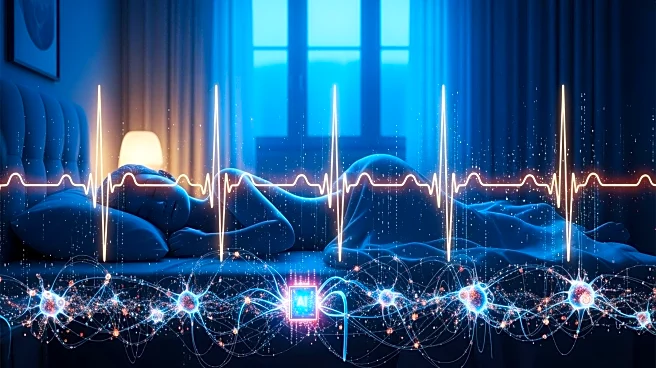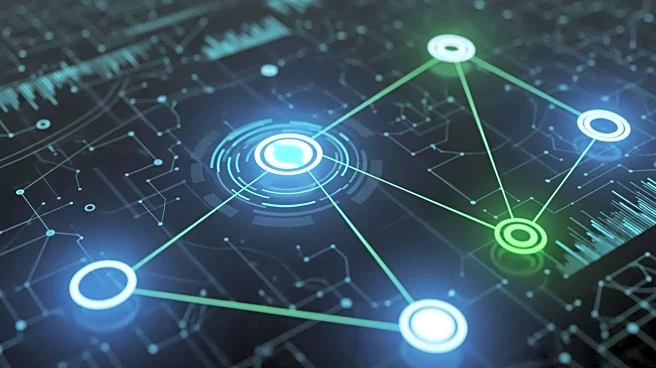What's Happening?
A study published in Nature has introduced a new AI model, ECG-TCN, that significantly improves the detection of obstructive sleep apnea hypopnea syndrome (OSAHS) using ECG data. The model employs a temporal
convolutional network combined with Fast Attention mechanisms to enhance classification accuracy. The ECG-TCN model achieved an overall accuracy of 91.6%, outperforming other models like LSTM and Transformer. This advancement offers a reliable solution for automated monitoring of sleep respiratory events, crucial for diagnosing sleep disorders.
Why It's Important?
The development of the ECG-TCN model represents a significant step forward in the automated detection of sleep apnea, a condition affecting millions of people worldwide. By improving the accuracy and efficiency of diagnosis, this technology could lead to better patient outcomes and reduce the burden on healthcare systems. The model's ability to accurately classify sleep events could also facilitate more personalized treatment plans and improve the quality of life for those affected by sleep disorders.
What's Next?
The implementation of the ECG-TCN model in clinical settings could revolutionize the way sleep apnea is diagnosed and managed. Further research may focus on refining the model and exploring its application in other areas of healthcare. Additionally, collaborations with healthcare providers could accelerate the adoption of this technology, making it accessible to a broader patient population.
Beyond the Headlines
The use of AI in healthcare raises important ethical considerations, including data privacy and the potential for algorithmic bias. Ensuring that AI models are transparent and equitable will be crucial as they become more integrated into medical practice.











